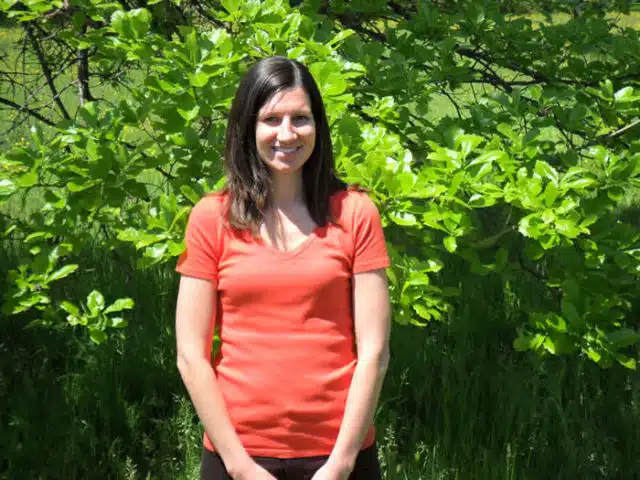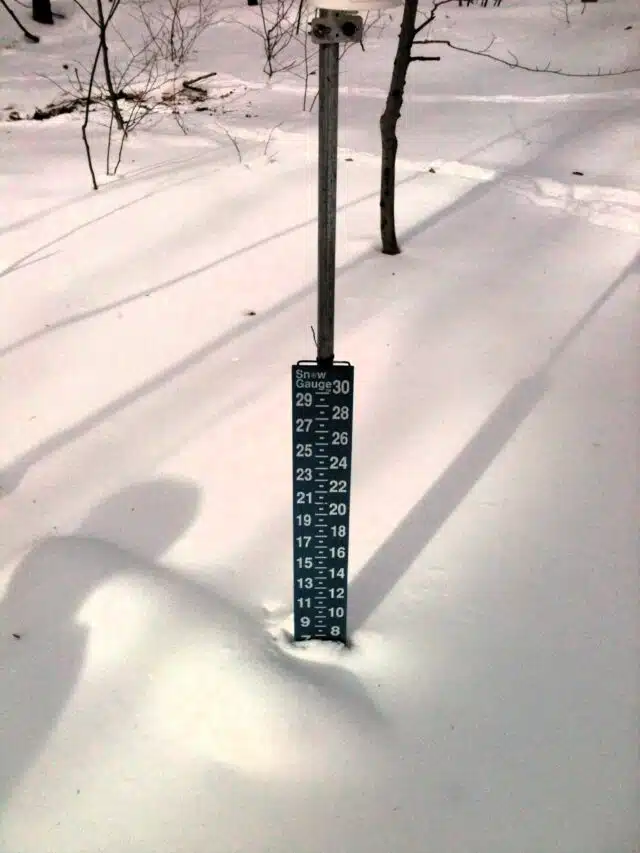
September is one of our favorite months in the Holden Forests and Gardens Soil Ecology lab. Why? Because it is National Mushroom Month. Many people celebrate National Mushroom Month by cooking and eating their favorite mushrooms. And we do too! But, in the Holden Research Department, we also celebrate National Mushroom Month by appreciating all that fungi do for forest health.
Mushrooms are a type of sporocarp, or the fruiting body of fungi. These sporocarps can hold billions of microscopic spores that are typically spread through the air during fungal reproduction. September is a great time to find sporocarps in the forests at Holden, as the temperature and soil moisture are often just right for fungi to form their fruiting bodies. Back in 2006, just as August was fading into September, Holden’s Vice President for Science and Conservation, David Burke, began collecting sporocarps from Bole Woods, Stebbins Gulch, and Pierson Creek. At collection, each sporocarp was given a unique ID and transported back to the Long Science Center. Once back at the science center, the sporocarp was subjected to a kind of surgery where two small pieces of the interior tissue were removed with a sterile scalpel. One of these pieces of tissue was used for DNA sequencing to identify the fungal species that had been collected, while the other piece of tissue was cultured on modified Melin-Norkrans (MMN) medium in a Petri dish. By 2009, over 350 sporocarps had been collected and added to our internal database.
An example of one of the collections is the Morganella pyriformis shown above. Morganella pyriformis is considered a puffball, so named because as the sporocarp ripens the spores can be distributed on the wind in what looks like a puff of smoke. This fungus is an example of what we call a saprotroph, or literally an organism that eats dead things. In the picture shown here, the fungus is growing and effectively digesting an old tree truck that has fallen in the forest. These fungi are master recyclers and break down dead wood and recycle the nutrients for their own growth. The pictures show the sporocarps in the field on the day they were collected, the sporocarps in the lab just before the tissue was collected for culturing and DNA extraction, and the petri dish culture we currently have in the lab. About 100 of the collected sporocarps were successfully grown in culture and have been growing in the lab ever since. (It may seem like we had a high failure rate, but there are estimates that only 10% of fungi in the environment will grow in culture.) Each year, we transfer a small amount of each fungal culture to a new Petri dish to keep the fungi growing.
Having these fungi growing in the lab allows us to ask different questions about their role in the forest. For example, do these fungi play a role in nutrient cycling within the forest and to what extent? In a study that was published in 2014 (found here), we grew ten of the fungal cultures on MMN media either with leaf litter mixed into the medium or with leaf litter absent. This allowed us to investigate leaf litter decomposition by the different fungal species by measuring extracellular enzymes. These enzymes are like digestive enzymes which fungi release into soil that break down organic matter, such as the leaf litter that falls each autumn or a tree branch that is broken off and falls to the forest floor. Thus, the enzymes are the mechanism of decomposition, which releases nutrients from the dead plant material and makes it available for use by organisms that live in soil. For years scientists believed that mycorrhizal fungi (i.e., those that live in association with plant roots – a topic we will cover in a future Science on Fridays with Holden) did not produces these extracellular enzymes because they had a plant host. However, through work by scientists from around the world, including our work with the fungal cultures, it was found that mycorrhizal fungi do, in fact, produce extracellular enzymes and contribute to decomposition. We found, for example, that mycorrhizal fungi in the genus Russula produced extracellular enzymes to the same level as saprotrophic fungi in our culture study. Studies like this one help us understand the important role fungi play in the cycling of nutrients in forests. And nutrient recycling is an important function, as it ultimately affects the availability of nutrients that forest trees need to grow and thrive.
In addition to using the fungal cultures in scientific studies, we also use the almost 350 DNA sequences to help us identify fungi from soil or root samples. This is especially helpful for understanding where fungi grow and work in soil when mushrooms are not available; which for most fungi is most of the time, as many fungi fruit infrequently. These DNA sequences are also publicly available at the National Center for Biotechnology Information (NCBI) website (found here). This allows researchers from around the world to use the sequences to help with their own identification. Stay tuned for another Science on Fridays with Holden for a post about DNA sequencing and how it helps us study forest fungi to help us celebrate National Mushroom Month!

Sarah Kyker, PhD
Postdoctoral Research Associate
Dr. Sarah Carrino-Kyker is a microbial ecologist interested in the influence of environmental change, both natural and human-caused, on microbial communities. Because microorganisms are small in size, they are environmentally sensitive. Yet their health and functionality can have a large impact on the overall health of a habitat due to their role in ecosystem processes. Her current research is focused on the soil communities of forests, how they’re impacted by environmental changes, and how these impacts in turn affect the health of the overall habitat or ecosystem.













